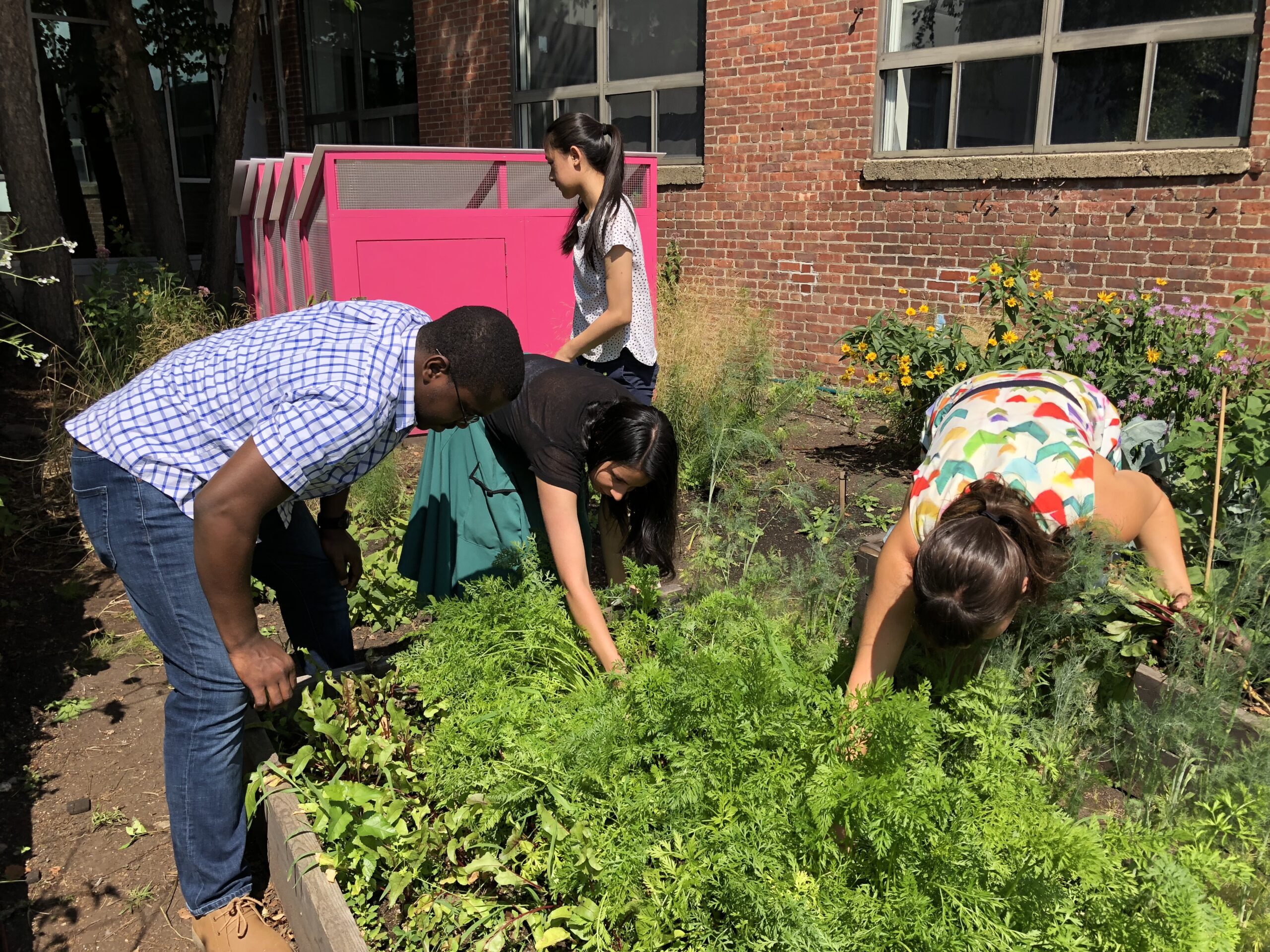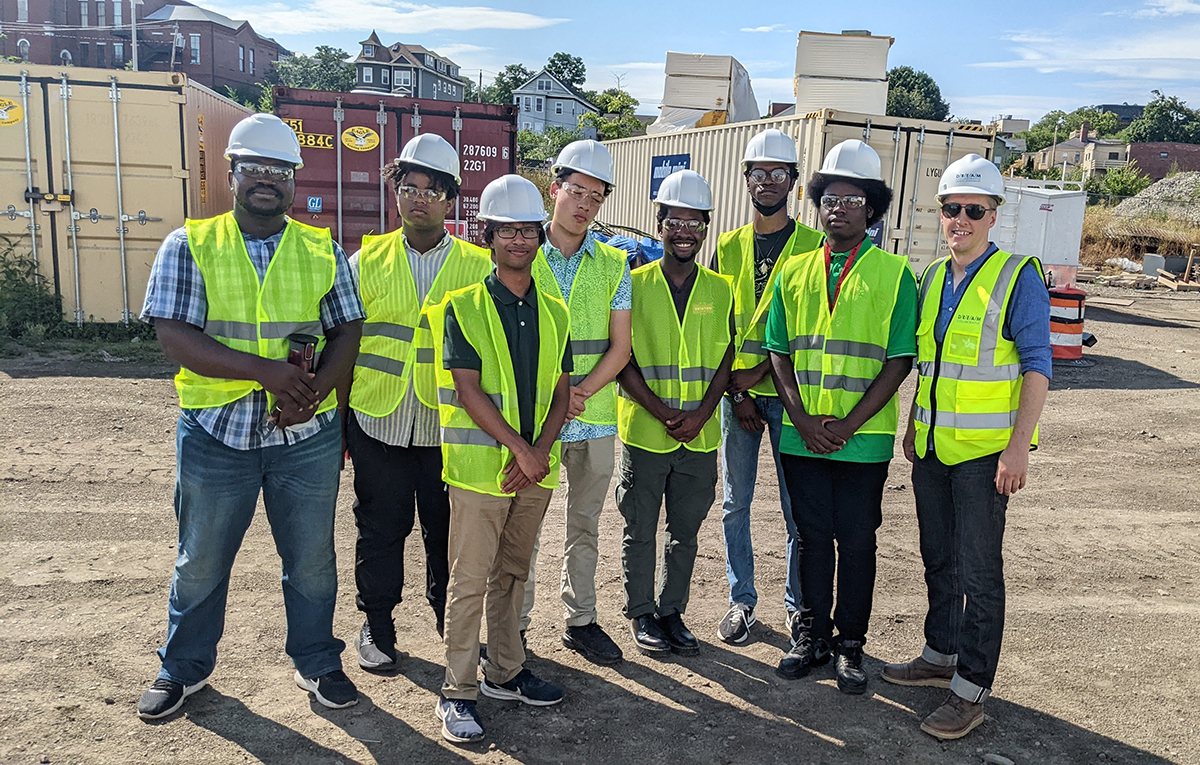February 10, 2023
Shemar Stewart: From SEED to Sasaki
Estefany Benitez
Shemar Stewart first joined the Sasaki Foundation’s Summer Exploratory Experience in Design (SEED) program as an intern in 2018, and has served as a teaching assistant every summer since. The SEED program inspired him to switch his major to architecture, and he has used his experience to guide more students through the program. Shemar just graduated from UMass Amherst and is now starting a year-long internship at Sasaki. Estefany Benitez, Sasaki Foundation Program Manager, recently sat down with him to talk about his SEED experiences and career path so far.
Estefany Benitez (EB): How did you get started working with the Sasaki Foundation?
Shemar Stewart (SS):I was about to graduate high school and wondered what to do next. My AP art teacher was recommending a sort of job opportunity. He gave me the contact information for a Sasaki planner. There had been an internship opportunity before SEED that was at Sasaki through Youth Design. This new version, run by the Sasaki Foundation, selected high school students, which included myself and another graduating classmate. The SEED program then was very different from what it is now. Far smaller, less activities and mentors. It has grown.
EB: How did you decide to go for architecture?
SS: When I entered UMass Amherst I was conflicted on whether to go for computer science or architecture. I thought both but I heard it was not recommended to do it at the same time. Then Alexandra [Lee, Sasaki Foundation Executive Director at the time] reached out to ask me if I would like to become a teaching assistant for that summer’s growing number of students. This is when I decided I should go into architecture because it’s something I enjoyed and had more of a career in.

Shemar Stewart as a 2018 SEED intern working in the Sasaki Garden
Watertown, MA
EB: The SEED program wasn’t a very long experience. Do you feel like it prepared you for what was coming or give you insight on what it would be like?
SS: My experience in the SEED program and my design education at UMass Amherst were vastly different as group and individual perspectives, respectively. During the SEED program, I experienced the need for teamwork, dividing up work but making sure everyone had a responsibility to every piece. The UMass program prepared me for working in modeling and design software, such as the Adobe Suite. However, working alone makes a project so different.
EB: How did you end up moving from your SEED internship at the Sasaki Foundation to Sasaki?
SS: Two weeks before the end of the 2022 SEED program, I had an informal meeting with a few Sasaki leaders, thanks to the relationships I’d built over the past several years. Since I was scheduled to finish my undergraduate degree by the end of the year, I expressed interest in working for Sasaki for a longer period of time. They later reached out to me and informed me that I could return, this time to Sasaki, giving me the opportunity to learn and work within a design firm on projects that interested me. Of course I accepted the offer and look forward to continuing my relationship with the Sasaki Foundation as well.

Shemar Stewart as a 2022 SEED teaching assistant on a construction site tour with DREAM Collaborative
Parcel P3, Roxbury, MA
EB: What did you enjoy about being in the SEED program?
SS: I enjoyed how satisfying the projects were as they became more realized by the students. The projects were as much the teaching assistants’ projects as they were the students’. Seeing how the students came up with their ideas and explained their reasoning was something I began to seek out. It helped to create a dynamic project that the students quickly became invested in, because it helped remove the fear of not getting the “right answer” when it came to their designs. We all gained more ownership over the project the more the students followed their interests. As teaching assistants we were there to guide them, as well as contribute ourselves.
EB: Do you feel that the program gave you more insight into what professionally working on a project is like?
SS: Yes. I feel I am more prepared for working at Sasaki because the design mentors are Sasaki staff. Having the hands-on experience and encouragement from the design mentors tells me we were doing something right. I have a bit more confidence coming into Sasaki and the responsibilities I will have on the projects I will be assigned to.
EB: What do you want students to know and to learn from this experience?
SS: If you are SEED alumni and your interests still lay in design, come back next summer. Through SEED, Sasaki has been a consistent presence in my career and has given me confidence. The networking and exposure to many different practices that Sasaki has in house spoils me for choice on what I want to do in the future. Every year there are always new people volunteering with the program, new presentations, and new field trips that could be what you are looking for.
The Sasaki Foundation is currently accepting applications for a SEED youth manager and SEED teaching assistants for summer 2023. Applications are due no later than March 31. And stay tuned! Applications for 2023 SEED interns will open next month.
